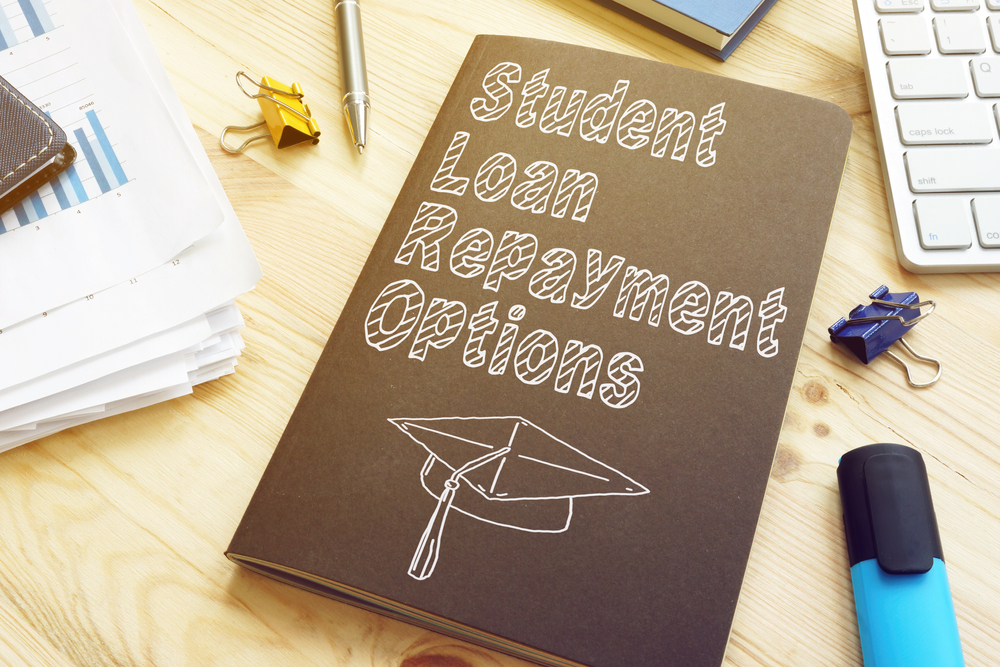The amount of students in the United States that are facing the sometimes overwhelming pressure of student loan debt is starting to get out of control.
In fact, it is estimated that about $1.6 trillion worth of student loan debt already exists.
If you are one of the millions of Americans in student loan debt and are starting to find that your own debt is starting to become too much to handle, you may be worried that you are on the verge of defaulting on your loans.
A student loan default will not only hurt you financially, but it will also impact your credit score for years or even decades.
This may make it extremely hard or even impossible for you to do things like take out a credit card, secure a car loan, or take out a mortgage to buy your first home.
If you are worried about defaulting on your loan, first you have to realize that you are very far from alone.
In fact, according to Time.com, there are 8 million borrowers (about 1 out of 6) who are currently in default of their federal student loans
That being said, it is important to know that you have options if you do default on your student loans.
On top of that, there are some very useful precautions that you can take to stop a default on your student loan from taking place in the first place.
If you are wondering, here is what takes place when you default on a student loan:
Signs That You Are on the Verge of Defaulting on Your Student Loans
It’s typically quite rare for a period of financial hardship to happen all at once.
While it is possible if you are unfortunate enough to undergo an expensive emergency medical procedure, or incur damage to your car or home, it is far more possible for financial hardship to come by the way of death by a thousand cuts.
There are ways to see the final blow coming, however. The risk of defaulting on student loans will increase if one or more of the prevalent signs apply to you:
- Your monthly budget is incredibly tight and one unforeseen expense can put your primary account in the red
- Your interest rate or monthly payments have increased even though you were rarely able to make the original payments before the increase
- You are discovering that it is becoming harder and harder to make your monthly payments on time
- You’ve already missed several payments in the past
- Your co-signer has either declared bankruptcy or has passed away – it can lead to automatic default
If you are experiencing one or more of these signs, now is not the time to panic. There are steps that you can take today that will reduce your risk of default.
How to Prevent Defaulting on Your Student Loans
If you find yourself on the path to potentially defaulting on your student loans, you can absolutely take some easy steps to set yourself up on a better course of success.
The important thing to keep in mind is that the options that are available to you depend and change depending on what type of student loan you took out.
Make a Payment
This is a rather simple solution, and if you are close to having the amount necessary to make a full payment on your student loan, it is in your best interest to do that right away.
While student loans are considered to be delinquent once you initially miss a payment, federal loans will not officially go into default until they go unpaid for a full 270 days.
Private student loans are not known to have this long of a grace period, as private lenders consider them to be very similar to other personal loans. They can go into default as soon as you miss one payment.
Regardless, if you have the money necessary to make a payment, make it right now. Federal lenders will give you a grace period of 90 days before reporting an unpaid loan as delinquent, private lenders can report it immediately.
If a default does take place, it won’t be long before that information hits your credit report.
Once that happens, it is unfortunately not long before things may start spiraling out of control. It is very hard to make up ground on a student loan default – and that is made even more difficult if your credit score takes a serious hit.
Apply for a Deferment or Forbearance
If you are not able to make a payment, one option that might be available to you is to suspend your payments through what is called either a deferment or a forbearance.
Both of these actions will halt your payment due dates for a specific amount of time. While interest rates will still apply if you apply for a forbearance, they may not accrue if you get approved for a deferment, especially if you have subsidized loans or Perkins loans.
If you are wondering which option is best to pick, chances are good the decision will be made for you depending on what your lender allows.
Deferring is ideal if you are able to do so, but if you have taken out a private loan, it is quite likely that forbearance is the only choice.
That being said, deferment is sometimes possible for economic hardship or unemployment.
When it comes to forbearance, you can get approved for it for as much as three years if your monthly payments make up at least 20 percent of your monthly gross income.
Apply for an Income-Driven Repayment Plan

Another way to lighten the load of your student loans is to apply for an income-driven repayment plan.
These are only available for federal student loans, and they work by reducing your monthly payment to a specific percentage of your income.
These plans are also known to qualify you for student loan forgiveness after a specific amount of payments, which often vary by plan.
If you are interested in applying for an income-driven plan, here are some things to absolutely keep in mind:
- You are going to have to reapply each year, and you will want to give yourself enough time to gather paperwork and submit it before your application is actually due
- Any amount of student loan that is forgiven under this type of plan may be considered taxable income.
If you are wondering what plans are available and which ones may work for you, it is all based on what kind of loan you have.
Here are the most common forms of income-driven repayment plans:
- Income-Based Repayment Plan
- Income-Contingent Repayment Plan
- Income-Sensitive Repayment Plan
- Pay as You Earn Repayment Plan
- Revised Pay As You Earn Repayment Plan
If You Have a Private Loan, Speak to Your Lender
It is one of the many drawbacks of privately funded student loans that they do not come with similar income-based programs, but that does not mean that you cannot facilitate more favorable payment options by talking to your lender directly.
Talk to your lender and see what kind of options they can offer for borrowers experiencing financial hardship. They might be able to offer some kind of deals that are not advertised openly.
It may benefit you greatly, and the worst case is that they do not offer anything of the sort and you are simply in the exact same position that you are now.
Refinance Your Student Loans
One option for both federal and private loans is to seek student loan refinancing.
Refinancing your loan is a way to essentially pay off your current loans by taking out a new private loan. Your new loan covers your current loan or loans and then you pay that one off going forward.
The reason why refinancing can be helpful is because it can often come with lower interest rates than what you were paying.
While you will likely be in debt to this new loan for longer, it can be a way to get some long-term financial relief.
Consolidate Your Student Loans
Another option that is available to you, that may actually be preferred to refinancing your loans is to consolidate your student loan debt.
Federal student loans are easy to consolidate via Direct Consolidation Loans. This group will not only bunch up all your monthly payments into one, it will also bring you down to a lower fixed interest rate that you can more easily plan for on a monthly basis.
It will also make you eligible for income-driven repayment plans which you otherwise may not be eligible for.
A consolidation loan can extend the time that you have to repay your loan up to 30 years, which will likely lower the value of your monthly payment.
Though it is, of course, worth noting that the longer you remain in the debt, the more interest payments you will have to make.
That being said, if you are concerned with your ability to make ends meet right now, it is probably best that you consider this option.
What Happens if You Default on a Student Loan
Now that you are finally aware of the ways that you can avoid defaulting on a student loan, let’s go over some of the things that will take place if you do ultimately end up defaulting.
There are a number of possible outcomes, and what takes place depends heavily on how long you have actually been in default.
Those outcomes include:
- You will lose eligibility for federal repayment flexibility
- You will be ineligible for student loan repayment assistance programs known as LRAPs
- Your credit score will take a serious hit – that will continue to grow worse as your default does as well
- You will likely face large fees
- You could face a suit for collections
- Your wages could be garnished and your tax refund could be seized
- You could lose your professional license
- Any co-signer will see a hit to their credit score
What to do When You Enter Default
By now, chances are good you know just how serious it is if you do end up defaulting on your student loan.
Even if this unhappy event does take place, however, you are not nearly out of options.
The three primary options listed by Federal Student Aid includes the following:
- Enter loan rehabilitation
- Consolidate your loans
- Repay your loans in full
Because the third one is very likely out of reach, the first two are most likely the ones that you want to focus on.
Direct Consolidation Loan, as has been previously discussed, is one option for avoiding default. To do this, you either have to set up an income-driven repayment plan or have the ability to make three consecutive payments on time.
Another option is student loan rehabilitation. With student loan rehabilitation, you would contact your lender and agree in writing to make nine monthly payments within 20 days of your original due date for the next 10 consecutive months.
The nice thing is that the payments you make do not have to be the full monthly amount you were already struggling to pay.
Instead, it will be payments worth 15 percent of your annual discretionary income divided by 12. The payment can actually end up being as close as $5 a month.
If you choose this option, your credit score will no longer show the default, but it will show the late payments that were reported.
Remember That You Are Not Alone
Truthfully one of the most painful aspects of student loan default is the sense that you are a failure and that you should be ashamed of your inability to pay off your loan.
Remember, that now more than ever, you are not alone in the least! There are millions of Americans who are dealing with the same issues that you are.
If you are ever feeling down in the dumps about your situation, it may help to seek online message boards or blogs to help you motivate and stay on task as you work to pay off your student loan debt for good.







